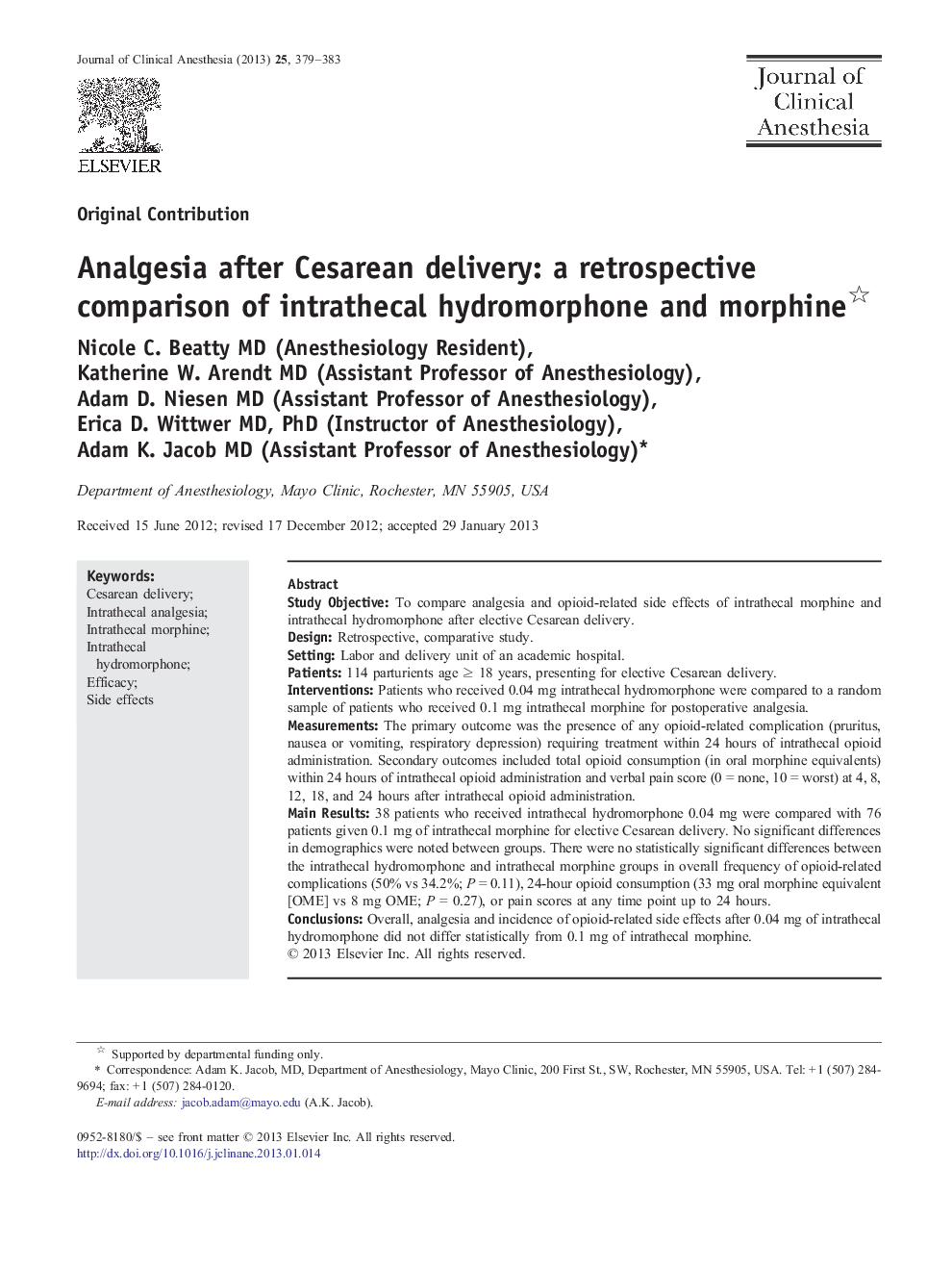| کد مقاله | کد نشریه | سال انتشار | مقاله انگلیسی | نسخه تمام متن |
|---|---|---|---|---|
| 2762826 | 1150729 | 2013 | 5 صفحه PDF | دانلود رایگان |

Study ObjectiveTo compare analgesia and opioid-related side effects of intrathecal morphine and intrathecal hydromorphone after elective Cesarean delivery.DesignRetrospective, comparative study.SettingLabor and delivery unit of an academic hospital.Patients114 parturients age ≥ 18 years, presenting for elective Cesarean delivery.InterventionsPatients who received 0.04 mg intrathecal hydromorphone were compared to a random sample of patients who received 0.1 mg intrathecal morphine for postoperative analgesia.MeasurementsThe primary outcome was the presence of any opioid-related complication (pruritus, nausea or vomiting, respiratory depression) requiring treatment within 24 hours of intrathecal opioid administration. Secondary outcomes included total opioid consumption (in oral morphine equivalents) within 24 hours of intrathecal opioid administration and verbal pain score (0 = none, 10 = worst) at 4, 8, 12, 18, and 24 hours after intrathecal opioid administration.Main Results38 patients who received intrathecal hydromorphone 0.04 mg were compared with 76 patients given 0.1 mg of intrathecal morphine for elective Cesarean delivery. No significant differences in demographics were noted between groups. There were no statistically significant differences between the intrathecal hydromorphone and intrathecal morphine groups in overall frequency of opioid-related complications (50% vs 34.2%; P = 0.11), 24-hour opioid consumption (33 mg oral morphine equivalent [OME] vs 8 mg OME; P = 0.27), or pain scores at any time point up to 24 hours.ConclusionsOverall, analgesia and incidence of opioid-related side effects after 0.04 mg of intrathecal hydromorphone did not differ statistically from 0.1 mg of intrathecal morphine.
Journal: Journal of Clinical Anesthesia - Volume 25, Issue 5, August 2013, Pages 379–383